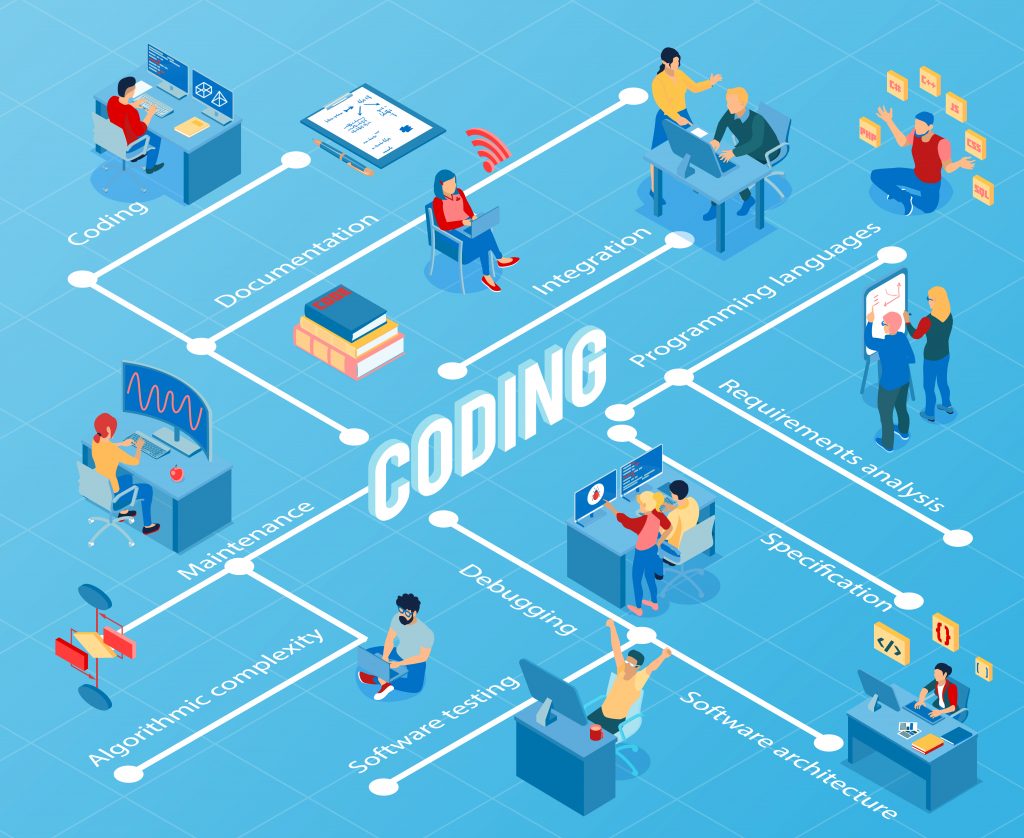Articles3 months ago
The Culture of Testing: Why Experiments Are the New Language of Startups
In the fast-paced world of startups, trying to figure out what really works can feel like shooting arrows in the dark. That’s where the culture of testing comes in—making experimentation the new language of innovation. Instead of relying solely on intuition or gut feelings, startups are increasingly adopting a mindset of continuous testing to drive growth and improve their products. Think of it as a scientific approach to business: small, quick experiments help teams learn what sticks and discard what doesn’t, all without risking big investments upfront. This shift isn’t just about quantifying user behavior but about embracing a mentality that sees failure as a stepping stone rather than a setback. From A/B testing landing pages to quick MVPs, startups are making data-driven decisions faster and smarter. The beauty of this culture is that it encourages curiosity, agility, and resilience—qualities crucial to thriving in today’s competitive landscape. By making experimentation their second language, startups can adapt rapidly, optimize resources effectively, and foster a mindset where innovation is driven by evidence rather than assumptions. In short, testing isn’t just a tactic; it’s becoming the heartbeat of startup success stories around the globe.
Stay Informed With the Latest & Most Important News
Latest Articles
Articles3 months ago
The Culture of Testing: Why Experiments Are the New Language of Startups
In the fast-paced world of startups, trying to figure out what really works can feel like shooting arrows in the dark. That’s where the culture of testing comes in—making experimentation the new language of innovation. Instead of relying solely on intuition or gut feelings, startups are increasingly adopting a mindset of continuous testing to drive growth and improve their products. Think of it as a scientific approach to business: small, quick experiments help teams learn what sticks and discard what doesn’t, all without risking big investments upfront. This shift isn’t just about quantifying user behavior but about embracing a mentality that sees failure as a stepping stone rather than a setback. From A/B testing landing pages to quick MVPs, startups are making data-driven decisions faster and smarter. The beauty of this culture is that it encourages curiosity, agility, and resilience—qualities crucial to thriving in today’s competitive landscape. By making experimentation their second language, startups can adapt rapidly, optimize resources effectively, and foster a mindset where innovation is driven by evidence rather than assumptions. In short, testing isn’t just a tactic; it’s becoming the heartbeat of startup success stories around the globe.
Articles3 months ago
Why Developers Are Choosing Simpler Tools—and What That Means for Product Quality
In the fast-paced world of software development, there's a surprising trend gaining momentum: developers are leaning toward simpler tools. While cutting-edge frameworks and complex environments often grab headlines, many professionals are finding that straightforward, easy-to-use tools can actually boost both efficiency and product quality. So, why is this happening? For starters, simpler tools reduce onboarding time and minimize mistakes. When developers spend less time wrestling with complicated interfaces, they can focus more on solving real problems rather than navigating confusing workflows. Additionally, straightforward tools tend to be more reliable—they have fewer bugs, less clutter, and easier maintenance. This simplicity often translates into cleaner code, which is easier to test, debug, and update. Another factor is collaboration; simpler tools lower the barrier for team members with varying skill levels, fostering smoother communication and a more cohesive workflow. Ultimately, choosing less complex tools isn't about sacrificing power—it's about enabling developers to work smarter, faster, and with greater confidence. As a result, the products built with these tools often see improvements in quality, stability, and user experience. This shift highlights that sometimes, less really is more in the world of software development.
Articles3 months ago
When Small Teams Launch Big Ideas: The Engineer’s Side of Startup Life
When it comes to startups, many folks picture massive teams and endless resources. But the truth is, some of the most innovative ideas come from small, tight-knit groups — sometimes even just one engineer with a big vision. These small teams have a unique edge: agility, flexibility, and the ability to move fast without getting bogged down in bureaucracy. It’s often the engineers behind these startups who are the real MVPs, wearing multiple hats and turning ideas into reality at lightning speed. In a startup environment, engineers don't just code; they get involved in everything from product design to user experience to early customer feedback. This hands-on approach means they can pivot quickly based on what they learn, iterating rapidly and refining their ideas on the fly. Plus, small teams foster close collaboration, which sparks creativity and drives innovation. Without layers of hierarchy, everyone’s voice matters, making it easier to test new concepts and take risks. Of course, launching big ideas with a small team isn’t without challenges. Resources can be tight, and wearing multiple hats means juggling priorities. But the payoff? The chance to make a real impact, see your ideas come alive faster, and build something truly disruptive. For engineers, being part of a small startup isn’t just about coding — it’s about creating and shaping the future, one bold idea at a time.
Articles3 months ago
A Founder’s Tech Diary: 30 Days of Building a New Product
Starting a new product is a wild ride—exciting, messy, and full of surprises. Over the past 30 days, I’ve been journaling my journey as a founder diving headfirst into building a fresh tech solution. From scribbling initial ideas to debugging the code at midnight, it’s been a rollercoaster. The first week was all about brainstorming and sketching out the core features—trying not to get overwhelmed by every cool idea that popped up. Then, I moved into rapid prototyping, which was both thrilling and frustrating. Shoutout to early user feedback that kept me grounded, helping me prioritize what's really essential. As the days went on, I faced challenges like integrating APIs, managing tight deadlines, and juggling other responsibilities. But each problem was a lesson in disguise. I also learned the importance of staying flexible—what seems perfect in theory often needs tweaking in practice. Documenting this process has shown me the value of persistence and adaptability. Sure, some days felt like setbacks, but overall, seeing progress, even tiny wins, kept me motivated. If you're thinking about building something new, my biggest tip is to start small, stay consistent, and remember that every step, even the tough ones, brings you closer to launching your vision.
Articles3 months ago
Working with Data in 2025: What New Developers Should Learn Now
Getting started with data in 2025 means understanding a few key trends that are shaping how new developers approach their work. First off, data privacy isn’t optional anymore—it's a must-know. With regulations like GDPR and CCPA evolving, learning how to handle data responsibly will set you apart. Next, cloud-based data tools are now the norm; platforms like Snowflake, Databricks, and Google BigQuery make it easier to store, process, and analyze huge datasets without breaking a sweat. AI and machine learning continue to grow, so getting comfortable with frameworks like TensorFlow, PyTorch, or even simple automation tools is a smart move. Also, data visualization has become more powerful and accessible—think interactive dashboards in tools like Tableau, Power BI, or open-source options like Grafana. For new developers, understanding how to integrate these tools into everyday workflows will be hugely beneficial. And don’t forget, learning some fundamentals of data engineering—like ETL pipelines and database design—will make your life much easier down the line. Ultimately, the key is to stay curious, keep experimenting, and build a solid foundation in both the technical skills and ethical considerations of working with data today. Being proactive now will make you a more confident, versatile developer tomorrow.
Articles3 months ago
How a Single Line of Code Can Reroute an Entire System’s Logic
Ever wonder how just one tiny line of code can totally change the way a system behaves? It’s pretty wild to think that a single instruction—sometimes as simple as flipping a condition, changing a variable, or adding a return statement—can reroute entire workflows or decision paths within an application. Think of a system as a series of interconnected roads; one small detour can lead to completely different destinations. This is especially true in programming, where control structures like if-else statements, switch cases, or function calls govern the flow. Changing one line can bypass an entire chunk of logic, redirect user flows, or even fix bugs by rerouting execution around problematic code. It’s a reminder of how powerful and delicate code can be—small adjustments have big impacts. Developers often find themselves in situations where tweaking that single line can optimize performance, fix errors, or introduce new features. But with that power comes responsibility: one wrong change can cause cascading failures or unintended consequences. So, mastering the art of minimal yet impactful code tweaks is a core part of becoming a skilled coder. It’s fascinating how such a tiny edit can have ripple effects throughout an entire system, proving just how interconnected and sensitive software architecture truly is.

















